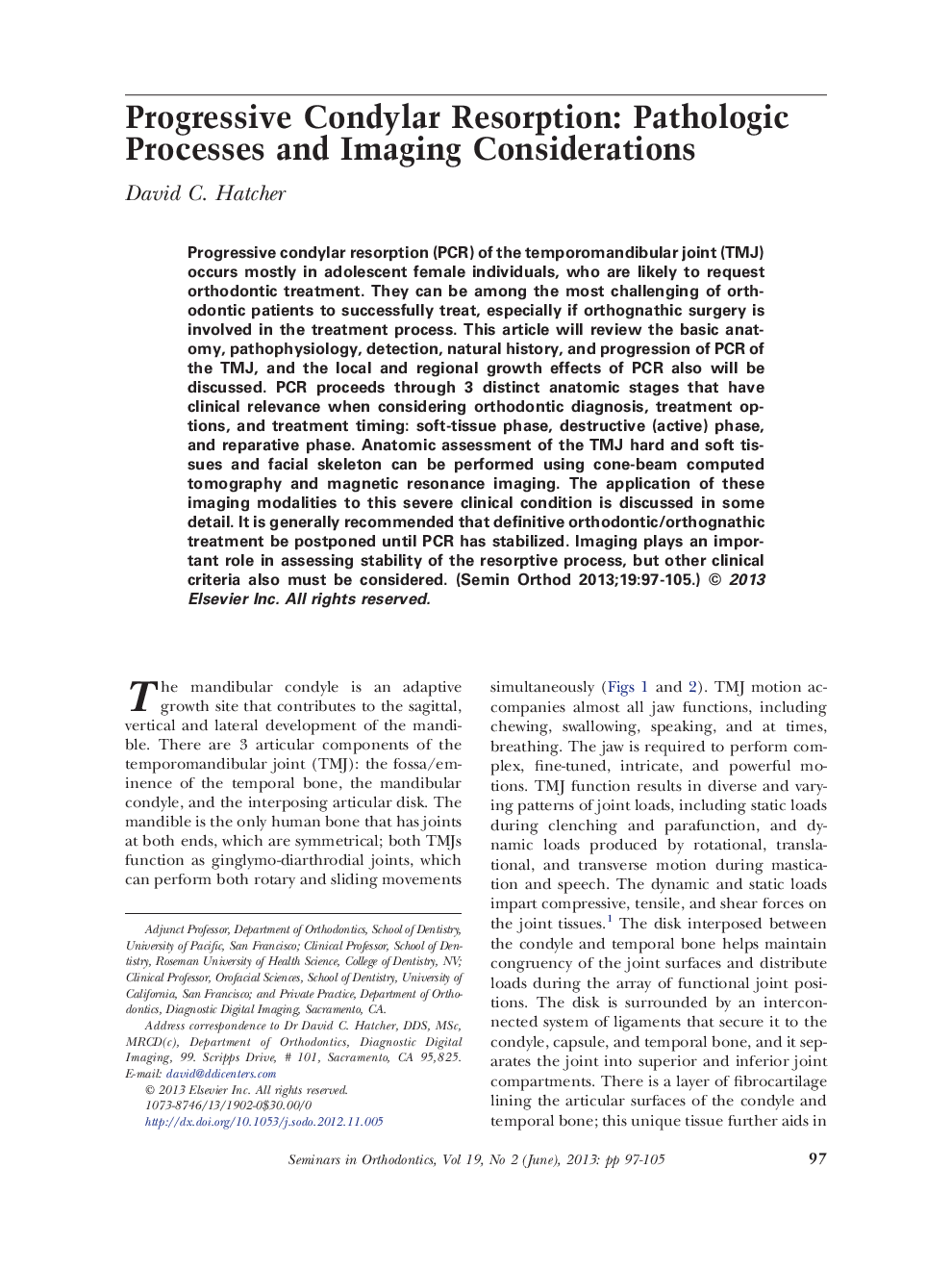| Article ID | Journal | Published Year | Pages | File Type |
|---|---|---|---|---|
| 3175491 | Seminars in Orthodontics | 2013 | 9 Pages |
Progressive condylar resorption (PCR) of the temporomandibular joint (TMJ) occurs mostly in adolescent female individuals, who are likely to request orthodontic treatment. They can be among the most challenging of orthodontic patients to successfully treat, especially if orthognathic surgery is involved in the treatment process. This article will review the basic anatomy, pathophysiology, detection, natural history, and progression of PCR of the TMJ, and the local and regional growth effects of PCR also will be discussed. PCR proceeds through 3 distinct anatomic stages that have clinical relevance when considering orthodontic diagnosis, treatment options, and treatment timing: soft-tissue phase, destructive (active) phase, and reparative phase. Anatomic assessment of the TMJ hard and soft tissues and facial skeleton can be performed using cone-beam computed tomography and magnetic resonance imaging. The application of these imaging modalities to this severe clinical condition is discussed in some detail. It is generally recommended that definitive orthodontic/orthognathic treatment be postponed until PCR has stabilized. Imaging plays an important role in assessing stability of the resorptive process, but other clinical criteria also must be considered.
